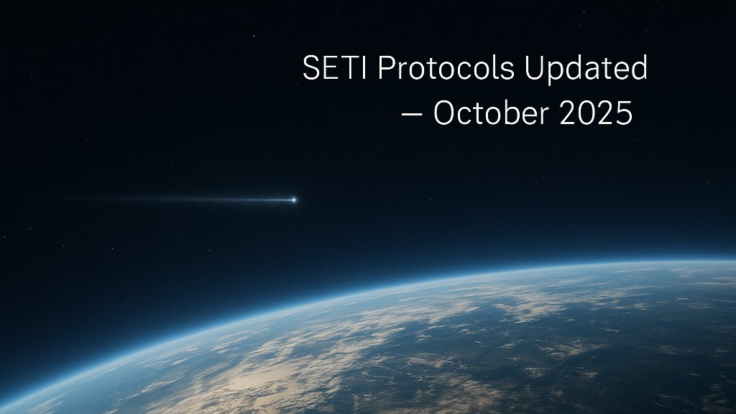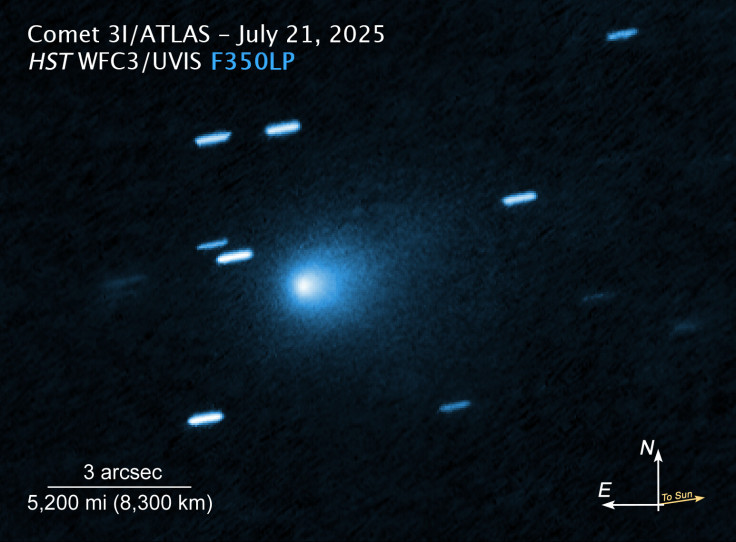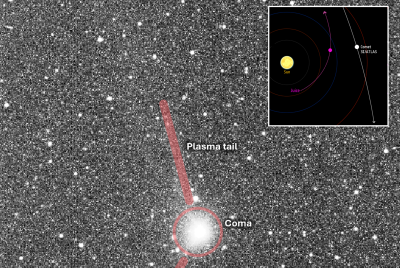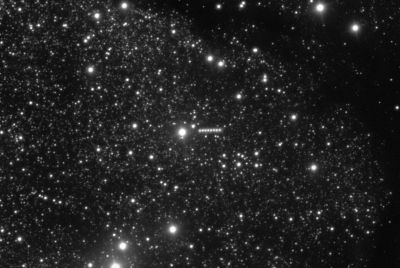3I/ATLAS Mystery Deepens: Alien Contact or Government Control? SETI's New Rules Spark Free Speech Fears
SETI's updated protocols on potential extraterrestrial signals raise questions about transparency and the right to know.

A newly detected interstellar object, 3I/ATLAS, has reignited global intrigue about extraterrestrial life just as the Search for Extraterrestrial Intelligence Institute (SETI) introduces controversial updates to its post-detection protocols.
While scientists hail the revisions as necessary for credibility, critics warn they could centralise control and limit how future alien-related discoveries reach the public.
Discovery of a Rare Visitor from Beyond
Spotted on 1 July 2025 by the Asteroid Terrestrial-impact Last Alert System (ATLAS) in Chile, 3I/ATLAS (C/2025 N1) is the third interstellar object ever confirmed, after ʻOumuamua (2017) and 2I/Borisov (2019).
NASA data confirm that the object follows a hyperbolic trajectory, meaning it originated outside our Solar System and will not return after its pass. Early readings from the James Webb Space Telescope (JWST) and ground-based observatories indicate it behaves like a natural comet, ejecting gas and dust as it approaches the Sun.
Scientists stress that 3I/ATLAS poses no threat to Earth. However, its composition—part ice, part rock—offers rare clues about planetary formation around other stars.

SETI, IAA Mull Revision of Post-detention Protocols
Meanwhile, the SETI Institute and the International Academy of Astronautics (IAA) have proposed revisions to their post-detection protocols, the international framework that guides how scientists confirm and communicate any potential discovery of extraterrestrial intelligence. The updated draft was submitted for review on 16 October 2025, aiming to modernise procedures for an era of increasingly sensitive telescopes and AI-assisted signal searches.
🚨 SETI Just Updated the Post Detection Alien Protocols
— Skywatch Signal (@UAPWatchers) October 22, 2025
The International Academy of Astronautics just overhauled the official SETI post detection protocols for the first time in 15 years.
Published October 16 2025.
Final vote: before year’s end.🧵👇#SETI #Disclosure #UAP pic.twitter.com/3s4bZvBcYY
The Science & The Speculation
Astronomers studying 3I/ATLAS describe it as a rare scientific opportunity, a chance to analyse material that formed around another star system. Spectroscopic data so far suggest a composition of ice and rock similar to long-period comets within our own Solar System. Some unverified media reports have suggested unusual metallic readings, but no peer-reviewed studies currently support claims of artificial origin.
Still, the discovery has inevitably stirred online speculation. Comparisons to ʻOumuamua, the first interstellar object once theorised by some to be an alien probe, have resurfaced on social media platforms. Researchers, however, caution that extraordinary claims require extraordinary evidence, urging patience while data continue to be collected.
"Every new interstellar object tells us something different about how planetary systems form," said one NASA researcher in a press briefing. "We're focused on the chemistry, not conspiracy.'
New Protocols and Transparency Debate
SETI's revised post-detection guidelines detail how scientists should verify, report, and share evidence of possible extraterrestrial contact. The framework encourages international collaboration, peer review, and the release of open data once results are confirmed.
Di tengah kehebohan 3I/ATLAS,
— KabarUFO (@kabarufo) October 23, 2025
pihak SETI (Search for Extra-Terrestrial Intelligence) baru saja meng-update "Protokol Pasca Deteksi".
Dokumen ini adalah panduan untuk para ilmuwan jika mendeteksi kehadiran alien.https://t.co/hfGrHGSIll pic.twitter.com/ZhcseZfSr8
The move is designed to prevent misinformation or premature announcements, lessons learned from past viral claims that turned out to be false alarms. Yet some space-policy analysts have raised concerns that the new model could centralise control over how discoveries are communicated, potentially limiting independent research groups' ability to share early findings.
SETI officials stress that the update is not about restricting information but about maintaining scientific integrity. The IAA has confirmed that the document remains under review and has not yet been formally adopted.
What It Means and What's Next
As 3I/ATLAS continues to move through the inner Solar System, telescopes will monitor its rotation, composition, and trajectory. The data could reveal where it originated—perhaps from a distant, Sun-like star system.
Meanwhile, the debate over SETI's communication policies reflects a deeper question: who decides how discoveries that could redefine humanity are announced?
Whether 3I/ATLAS turns out to be a routine comet or something more enigmatic, its arrival has rekindled public fascination—and anxiety—about how much we'll be told when proof of alien life finally emerges.
© Copyright IBTimes 2025. All rights reserved.





















